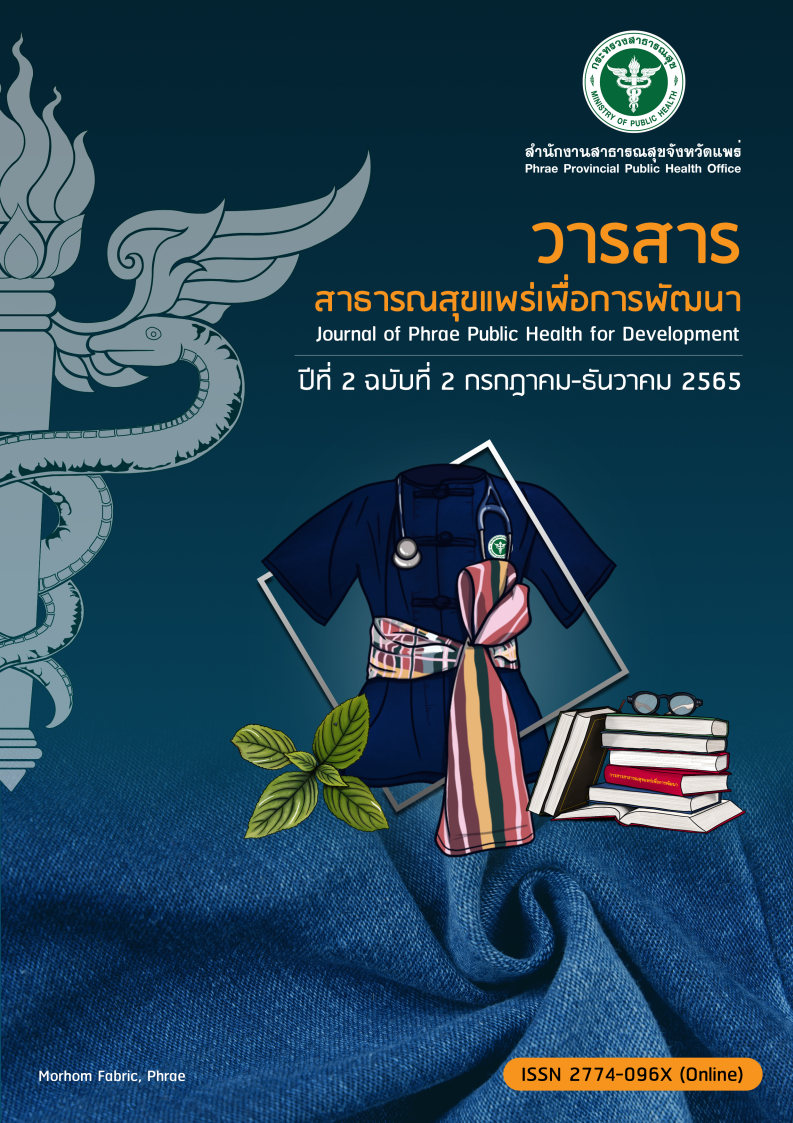The Study on the Potential Incidence of Severe Thalassemia among Children Born to at-risk Partner of pregnant woman, Antenatal Care Clinic, Long Hospital, Phrae Province
Keywords:
Thalassemia, Thalassemia screening test, Severe thalassemiaAbstract
This study were to 1) study the prevalence of pregnant women and
their partners who tested positive for thalassemia carrier screening;
2) study the prevalence of at-risk couples who have the potential to have
children with severe thalassemia; 3) study the incidence of severe
thalassemia from the screening tests and 4) be used as part of planning
for the prevention and control of thalassemia in Long Hospital.
The sample were 467 pregnant women attending antenatal care at Long
Hospital, Phrae Province. The results showed that pregnant women who
gave positive and negative results for primary thalassemia screening
accounted for 40.47 percent and 59.53 percent, respectively.
The number of pregnant women who tested positive for thalassemia
screening separately was 12.83 percent of the pregnant women who had
DCIP test, and the erythrocyte index MCV<80 fL was 62.03 percent,
and the DCIP test was positive with MCV<80 fL, representing 26.20
percent of the pregnant women who tested positive for thalassemia
screening. At-risk couples of pregnant women who tested positive for
thalassemia screening were found to have abnormal matching results.
Both of them had to be sent for further testing, accounting for 28.04
percent and the husband who had the matching results found that the
husband had a normal result representing 71.96 percent. The risk of
pregnant women and husbands having abnormal results, both must be
sent for further examination, it was found that the number of at-risk
couples whose children were at risk and without the risk of severe
thalassemia was 24.53 percent and 75.47 percent respectively. From the
number of risk couples whose children are at risk of severe thalassemia,
it can be classified as follows: Hb' Bart's hydrops fetalis 23.08%, Beta
-thalasemia/Hb E Disease accounted for 61.54 percent and Beta
thalassemia Disease accounted for 15.38 percent.
Downloads
Published
How to Cite
Issue
Section
License
Copyright (c) 2021 Phrae Provincial Public Health Officer

This work is licensed under a Creative Commons Attribution-NonCommercial-NoDerivatives 4.0 International License.





